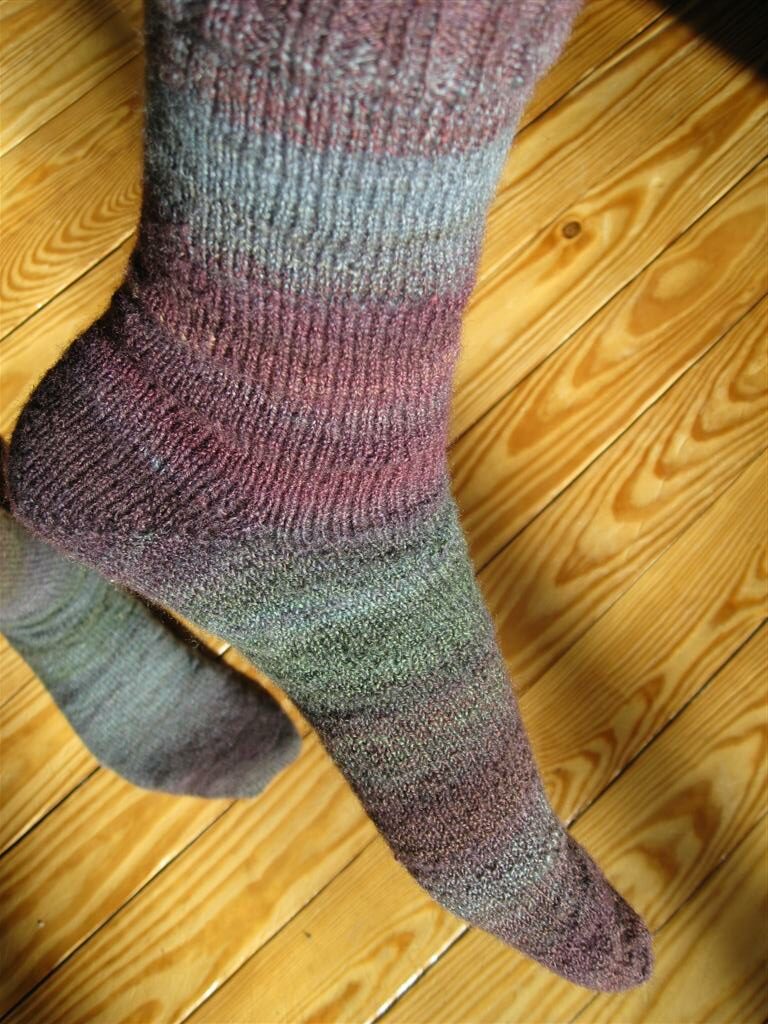When it comes to crafting socks, especially toe-up varieties, the design of the heel is paramount. The right heel construction not only impacts the fit and comfort of the sock but also influences the overall aesthetic and durability. In this exploration, we will delve into the various heel constructions suited for toe-up socks. Each method possesses unique characteristics that cater to diverse preferences and knitting styles.
First, let’s lay the groundwork by understanding the philosophy behind toe-up sock construction. This method allows for a more user-friendly approach to sizing and fit. Knitters can try on the sock as they go, ensuring a perfect fit at every stage. However, as you transition from the toe to the heel, selecting the right construction technique becomes critical.
One of the most popular and versatile constructions for the heel in toe-up socks is the short-row heel. This technique involves creating a cushy, rounded heel through the use of short rows, which are sections of knitting that do not complete a full row. The beauty of the short-row heel lies in its adaptability; it can be made to suit various yarn weights and stitch patterns. Short-row heels eliminate the need for a gusset, which simplifies the knitting process. They are particularly loved for their seamless construction, leading to a visual and tactile smoothness that complements the overall design of the sock.
Another appealing option is the Fleegle heel. This heel construction is notable for its innovative design that encompasses a seamless transition from the leg to the heel. The Fleegle heel is a hybrid of short-row and traditional heel constructions, merging the practicality of both to create a design that is simple yet effective. It is particularly well-received among those who enjoy a challenge, as its unique technique provides a sense of satisfaction upon completion. This method also allows the sock to maintain its elasticity and comfort, ensuring it hugs the contours of the foot beautifully.
For those who prefer a more traditional approach, the afterthought heel might be the ideal choice. This construction is unique in that the heel is constructed only after the main body of the sock is completed. Think of it as ‘building in’ the heel post-facto, allowing for flexibility in design and fit. Knitters often choose this method to experiment with color work or intricate patterns, as the heel is not initially included in the design. Afterthought heels also offer a straightforward solution for those concerned with fit; adjustments can easily be made once the sock is complete.
The stitched heel, also referred to as the “Dutch heel,” is yet another option worth considering. Known for its sturdiness and structure, this method requires a bit more finesse but pays off with a robust finish. It includes a flap that provides additional fabric, enhancing the durability of the sock in high wear areas. Knitters might find the stitched heel compelling for heavier usage garments, such as hiking or work socks, where durability and support are of the essence. This method offers a traditional appeal while still fitting snugly to the foot.
The German short-row heel is a variation on conventional short-row techniques and is particularly praised for its comfort and fit. This construction employs a knitting technique that includes a wrap-and-turn method, making it slightly different than standard short-row heels. The use of wraps ensures that there are no holes in the transitions, which can often plague other short-row methods. This heel supports high arches well, making it a favorite among knitters looking for an ergonomic solution. The German short-row heel also comes with a pleasing appearance, offering a clean and polished look that can enhance any sock design.
In addition to these constructions, it’s vital to consider how the choice of yarn influences the heel design. Certain fibers, like wool, provide natural elasticity, whereas synthetic blends can offer increased durability and moisture-wicking properties. Understanding the interplay between the yarn and heel construction will empower knitters to achieve not only functional but also aesthetically pleasing results.
As you contemplate which heel construction to use for your toe-up socks, think about your style as a knitter. Are you a methodical crafter who enjoys precise, structured designs? You might gravitate towards the German short-row or stitched heel. If you relish the freedom in design and want to maintain an element of surprise, the afterthought heel could be your muse.
Lastly, let’s address the importance of gauge and fit. With any heel construction, achieving the correct gauge is crucial. A mismatch can lead to discomfort or unsightly discrepancies in the finished product. Before embarking on your sock journey, ensure you conduct a gauge swatch, considering the stitch count that will work best with your chosen heel design. It is also wise to incorporate a bit of negative ease to ensure the sock hugs your foot comfortably without being overly constricting.
In conclusion, the world of sock design, particularly concerning heel constructions for toe-up socks, is rich and varied. With options ranging from short-row to afterthought heels, knitters can express their creativity while ensuring comfort and durability. Regardless of the method chosen, the end result promises to be a delightful union of functionality and style. Happy knitting!
